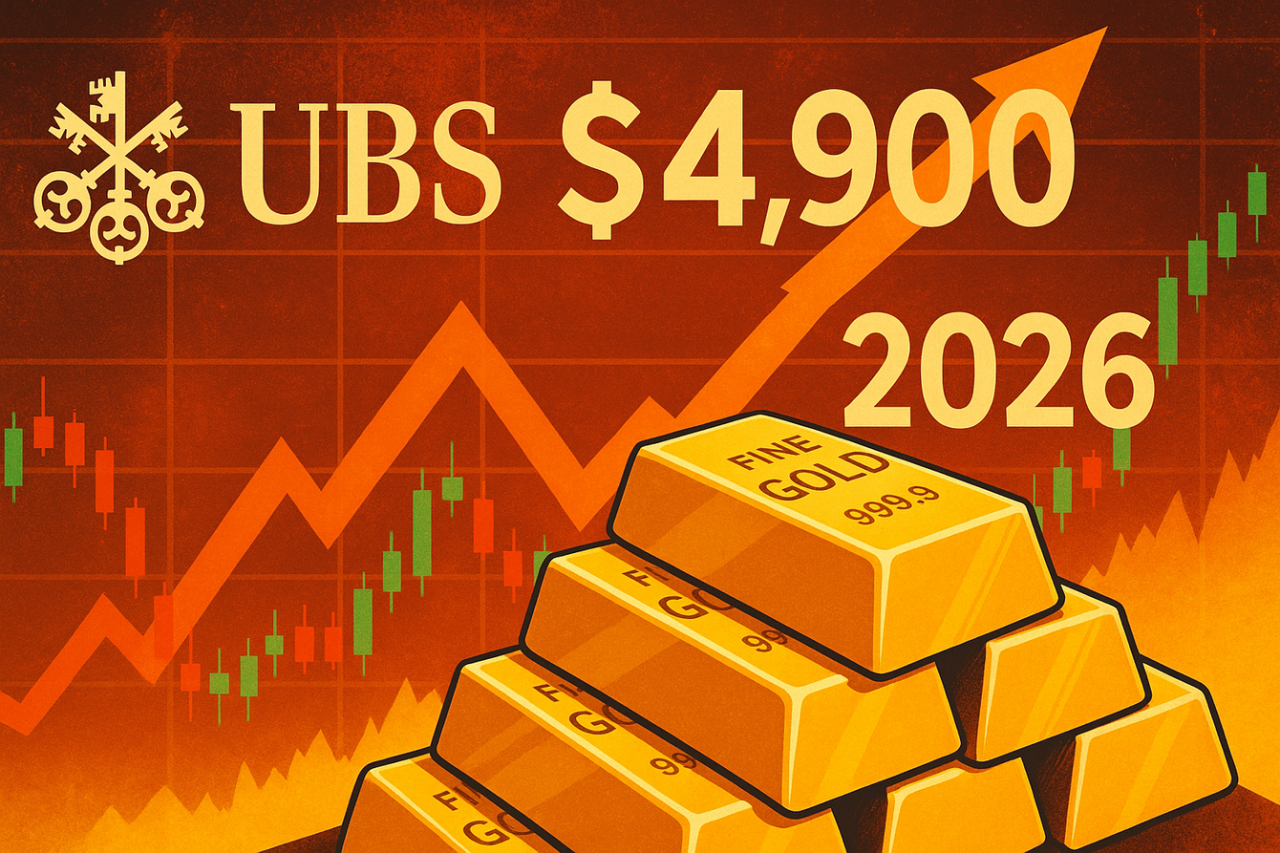UBS raises upside case for gold to $4,900/oz by Q2 2026 on political and financial risks

UBS has raised its 2026 mid-year gold target price to $4,500/oz – up from $4,200 previously – on Fed rate cut expectations, persistent geopolitical risks, fiscal concerns and strong demand from central banks and ETF investors.
“We expect gold demand to rise further in 2026, influenced by anticipated Fed rate cuts, lower real yields, continued geopolitical uncertainties, and changes in the domestic US policy environment,” UBS wrote in a note on Thursday.
The bank also raised its upside target for gold by $200 to $4,900 per ounce on a possible spike of political and financial risks, but maintained its downside case at $3,700 per ounce.
UBS analysts said the worsening U.S. fiscal outlook will likely support central bank and investor gold purchases and they expect demand for exchange-traded funds (ETF) to remain strong in 2026.
On the other hand, they warned that potential Fed hawkishness and the risk of central bank gold sales remained key challenges to their bullish outlook.
On Nov. 3, UBS analysts said the current pullback in the gold market is only temporary, and they see an upside scenario of intensifying geopolitical or market risks that could drive the yellow metal’s price as high as $4,700.
“The much-anticipated correction has taken a breather,” they wrote in a research note. “Outside technical factors, we see no fundamental reason for the sell-off.”
The Swiss banking giant noted that “fading price momentum triggered a second leg down in futures open interest,” but they emphasized that underlying demand remains strong.
UBS analysts also cited the World Gold Council’s Q3 Gold Demand Trends report, which confirmed “very strong and accelerating buying” from both central banks and individual investors.
“Central bank purchases of 634 metric tons this year have been slower than last year’s pace but are picking up in Q4, in line with our forecast of 900–950 metric tons for 2025,” they wrote.
ETF inflows of 222 metric tons and bar and coin demand above 300 metric tons for the fourth consecutive quarter demonstrate that investor appetite has also strengthened. “Jewellery demand was also not as weak as feared,” UBS noted.
“We like to buy the dip in gold,” the analysts said, adding they continue to believe that investors “remain underallocated” to the metal. UBS recommends a mid-single-digit allocation to gold within investor portfolios.
On Oct. 20, Sagar Khandelwal, strategist at UBS Global Wealth Management, said lower real interest rates, a weaker dollar, rising government debt, and geopolitical turmoil could push the yellow metal to $4,700 per ounce by Q1 2026, and mining stocks will do even better.
“While the scale and speed of the gold rally may mean volatility could pick up from here, we maintain the view that gold is a valuable component of a resilient investment strategy,” he wrote.
Khandelwal warned that U.S. real interest rates could well fall into negative territory as the Federal Reserve cuts interest rates amid still-sticky inflation.
“We believe this will further undermine the appeal of the US dollar and therefore boost investment flows into bullion,” he said. “In fact, global gold ETFs recorded their largest monthly inflow in September (USD 17bn), according to the World Gold Council, making the USD 26bn in inflows over the three months to September the strongest quarter on record.”
UBS believes investment demand can strengthen even further. “[C]oupled with still-elevated central bank purchases, global gold demand this year should, in our view, reach around 4,850 metric tons, the highest level since 2011,” Khandelwal wrote. “If private investors begin diversifying US Treasury holdings into gold, which has been a trend among central banks, spot prices could be pushed even higher.”
“Finally, as economic, geopolitical, and policy uncertainties remain, we expect continued flows into the yellow metal, which could spur additional gains toward our upside case of USD 4,700/oz,” he said. “Given the precious metal’s low correlation with equities and bonds, especially during periods of market stress, we favor a mid-single-digit exposure to gold in a well-diversified portfolio.”
“Separately, investors can also consider equity exposure to select gold miners as their cash flow could rise faster than gold prices in the next six months,” Khandelwal added.
Gold prices have slid close to session lows on Thursday after failing to hold above $4,100 just after 10 am EST.
Kitco News

